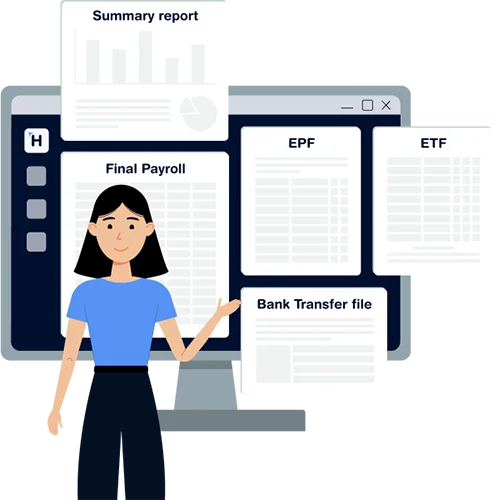Due to the current status of the economy, many people seek additional income in addition to their primary income. More and more people are choosing to earn extra money through consulting, freelancing, or taking on a part-time job. Having a secondary employment or income source means having one in addition to your primary employment. People frequently work in secondary employment to supplement their income or search for new chances. It is essential to understand the tax implications of having many sources of income since you must report and pay taxes on all your income, regardless of whether it comes from your primary or secondary employment.
In this article, we provide a clear and concise guide to navigating taxes on secondary employment income in Sri Lanka for individuals with two incomes.
1. Key Considerations for Secondary Employment Income
When you have both primary and secondary income, it’s important to consider the following key points:
a. Tax Obligations: Taxes are imposed on all income sources, including both primary and secondary employment. You have to file and pay taxes on both your primary and secondary income to complete your tax obligations.
b. Tax Rates: The tax structure in Sri Lanka is progressive, meaning that tax rates rise in step with income levels. For determining your tax liability correctly, it’s essential to have a thorough understanding of the applicable tax brackets and their corresponding rates. Knowing this information makes it possible for you to calculate your tax liability accurately.
2. Calculating taxes on secondary employment
It’s significant to note that depending on whether an individual is a resident or a non-resident, different tax tables or procedures may be used to determine taxes on income from secondary employment. In comparison to non-residents, you are subject to various tax rates and thresholds as a resident.
When it comes to resident employees, you need to identify your primary income. Once you know your primary income, you can determine the tax bracket from the secondary income tax table that applies to you and the corresponding tax rate for that specific bracket. This step is important in understanding how your secondary employment income will be taxed. By knowing your primary income and its tax bracket, you can accurately assess your overall tax liability. But if your total monthly gain is higher than that you are subject to tax.
If your total income including primary and secondary employment is less than Rs.100,000 you’re exempted from tax.
Non-resident employees are subject to a fixed tax rate of 36% for their secondary employment income. This means that their secondary income should be multiplied by 36% to calculate their tax liability.
3. Identify the tax bracket and calculate tax liability:
Consult the tax rates issued by the Inland Revenue Department to calculate the tax bracket that applies to your entire income. Multiply your secondary employment income by the tax rate associated with each applicable tax bracket to determine how much tax you must pay.
Discover your tax rate effortlessly by referring to the provided table (resident employees):
| Primary employment income (Rs.) | Tax rate |
|---|---|
| 0 - 100,000 | Total remuneration from Secondary income * 6% |
| 100,001 - 141,667 | Total remuneration from Secondary income * 6% |
| 141,668 - 183,333 | Total remuneration from Secondary income * 6% |
| 183,334 - 225,000 | Total remuneration from Secondary income * 6% |
| 225,001 - 266,667 | Total remuneration from Secondary income * 6% |
| 266,668 and above | Total remuneration from Secondary income * 6% |
Example: Jude is a resident employee of company ABC, and his monthly income is Rs.200,000(primary income). Apart from that he’s doing a job at company XYZ, and he gets a monthly income of Rs.150,000 as secondary employment.
Tax liability of Jude-
According to the secondary income tax table, his primary income falls under the tax bracket Rs.183,334- 225,000 and the applicable tax rate for this range is 24%.
The tax- deductible is Rs. 150,000 X 24% = 36,000
Conclusion
In conclusion, as the economy experiences fluctuations, many individuals in Sri Lanka turn to secondary employment to supplement their income. However, it is vital to be mindful of tax obligations, as all sources of income, including primary and secondary employment, are subject to taxation. Understanding the applicable tax rates and brackets is key to accurately calculating tax liabilities. By adhering to the guidelines provided by the Inland Revenue Department, individuals can ensure compliance and effectively manage their finances during these challenging times. Being informed empowers individuals to make wise financial decisions and maintain a stable financial outlook.
For detailed information on the taxation of secondary employment in Sri Lanka, you can refer to the official document provided by the Sri Lanka Inland Revenue Department.

